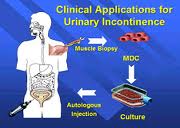Dr. David Katz delivered a keynote address where he said that lifestyle has profound changes on our system. This took place at the 22nd Annual World Congress on Anti-Aging Medicine in Las Vegas Dec. 10-14, 2014. His talk was entitled “Integrative Medicine: A Bridge Over Healthcare’s Troubled Waters”.
He started the 1 hour talk with showing a slide of six blind men and the elephant. The conclusion was that each of the blind men saw only one aspect of the elephant, but no one saw the true elephant. With healthcare it is a bit like that.
Causes of death
Dr. McGinnis et al. in 1993 published the “Actual causes of death in the United States”.
Ten factors were responsible for chronic disease, but the first three things on McGinnis list were the most important ones: tobacco use, diet and lack of exercise.
Mokdad in 2004 noted that the revised list of “Actual causes of death in the United States”: tobacco was no longer number one.
Effect of healthy lifestyle
Ford et al. in 2009 stated: “Healthy living is the best revenge…Nutrition-Potsdam study”
Although there is no magic pill for reducing disease, lifestyle is exactly “the magic pill” that reduces mortality by almost 80%.
Fastforward to 2014: Akkeson et al. came to the same conclusion when examining what would be able to prevent heart attacks. They stated that LIFESTYLE is what matters.
We live in the “epigenetic age: dinner is destiny!” With this Dr. Katz meant to say that our genes get switched on and off depending on what we put into our mouths. This determines whether we live shorter or longer lives.
He went on to say: “Feet (exercise), forks (diet), fingers (cigarettes) are what matters.” Oncogenes can get turned off in prostate cancer with the help of exercise, the right food intake and quitting to smoke.
Food addiction and obesity
Dr. Katz mentioned the book by Michael Moss “Salt, sugar, fat”, which made it to the cover story of Time Magazine in 2013. In it is described how the food industry employs PhD’s to include agents in processed foods to ensure that consumers get addicted to the food products. Food addiction leads to obesity; the CDC statistics show that it is effective! We have put up with this for far too long. There are differences of obesity rates between countries, here Canadian and US statistics shown.
Dr. Katz asked the audience to raise up their hands, if they had a person close to them die of cancer, a heart attack or a stroke. Almost all of the more than 500 participants in the Hall raised their hands.
Children education programs
So what is the ONE thing that can fix everything? He answered this rhetoric question by saying that there is no one thing that fixes everything. But we can start at a young age by educating our children. Dr. Katz has started a program for school kids called “ABC for fitness for kids” to prevent obesity. The program teaches children healthful food choices. Dr. Katz commented that a website, NuVal uses a nutritional value rating system to monitor food quality and manufacturers have improved the content of their products because the composition of their products were displayed on that website. We need to be vigilant and read labels.
Change one thing at a time
But we can only change one thing at a time, like we walk one step at a time on a spiral staircase to get to the next floor. We ask ourselves about our lifestyle: what is the first thing to fix? We fix this point (like exercise more), then we fix the second (adopt a Mediterranean diet), the third (take specific vitamins and supplements) and so on; in other words we approach one thing at a time. Integrative medicine, the fusion of conventional and non-conventional medicine, can help to solve problems one step at a time.
Effect of CoQ10
Despite a bias in the North American medical literature saying that CoQ10 was “useless”, the European Heart Journal reported in 2013 that CoQ10 decreases all-cause-mortality in patients with heart disease. Here is a link to a more recent article (Dec. 2014) regarding a two year trial with congestive heart failure patients taking only 100 mg of CoQ-10 three times daily that found that all-cause-mortality was reduced significantly.
Blue zones
There is a new wave going around the United States: It is the idea to copy the lifestyle of the blue zones around the world. Blue zones are areas in the world where the life expectancy is 100 years or more. This link leads you to a information about blue zones that is worth watching.
It explains how Blue Zones are being established all around America. Dr. Katz explained that lifestyle is the medicine and the environment is the spoon. In Blue Zones the environment is such that people who live long, healthy lives influence you positively. They spoon it to you non-verbally by their example. Organic vegetables in stores are cheaper in Blue Zones, so it is easier to eat more of them; people socialize more with each other, they exercise more and dance. This is what people do who live longer than 100 years. In other words, you change the culture, you change your lifestyle, you exercise more, you stop smoking, you eat healthy and you live longer.
You must decide on which pathway to go
Dr. Katz ended his lecture with the image of you walking along and coming to a fork. To go further you must decide to go on the pathway to your right or on the pathway to the left. You turn on the right pathway by deciding to adopt the principles of the Blue Zones; you make the decision to want to turn older than 100 years and keep your vitality until it is time for you to pass on. In the meantime you enjoy every day, you are not disabled and your mind and body stay healthy. The other pathway was the one that the majority of the industrialized Western nations has taken in the last few decades. Which path will it be that you decide to take?
Conclusion
At the conference Dr Katz and a number of other speakers pointed out how powerful lifestyle is for our body functions. Other speakers stressed the importance of telomeres, the caps of the chromosomes, which comprise the end of the double stranded DNA. With every cell division our telomeres shorten. Stem cells also have telomeres, but they are on average longer than the somatic dells. It probably is like this to be able for stem cells to replace the aging somatic cells.
There is a new logic of a healthy lifestyle is. It says that a healthy lifestyle causes healthy telomeres of somatic cells and of stem cells. This causes health until a ripe old age. I will be blogging about some of the other key talks of the conference in the near future to clarify this point further.








